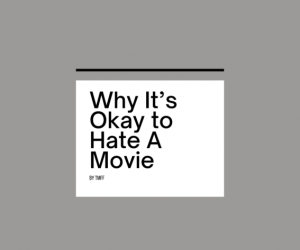Like it or hate it, but technology advancement never stands still, and a slightly longer sleep entails the risk of not recognising the world you wake up in. Especially in the last couple of centuries, technology has involved in small but steady increments, and has continuously shaped the way people communicate, travel or consume their dose of entertainment. And yes, these shifts have applied to out beloved film industry as well, and even to the niche of film festivals. Let’s address some of the stuff that has changed over the past two decades.
Online here, online there, online everywhere
The Internet is a great thing, I think we can all agree on that. After all, you wouldn’t be able to browse TMFF’s website and read this article, if you didn’t have an Internet connection. So, following the strive of humankind to actively involve the online medium is everything they do, film festivals did not escape such a trend. As an online film festival, we can certainly attest to that! Gone are the days when you had to rely on inefficient postal services in order to handle the submission of a screenplay, or a DVD containing your latest film. With two clicks, and a few seconds, your project turns from ‘not yet submitted’ to ‘successfully received’. Neat, huh?
But wait, there’s more! You’d like to attend a certain film festival, but the fact that it’s taking place halfway around the globe doesn’t really tilt matters in your favour? No problem! With the same two clicks, you can stream the proceedings of said festival, all from the comfort of your home. As an added bonus, you might even have the possibility to cast a vote for your favourite selections, just as any individual attending in person can do. If it’s possible, why not make it work?
The battle of formats and mediums
While most of us might agree with the benefits that the online medium brings to film festivals, increasing submission speed, decreasing costs and boosting the potential audience’s numbers, we’re now heading into grey territory. Just like someone from Naples might look at a New York style pizza in complete disgust, a film enthusiast might bash today’s trends of using DCP (Digital Cinema Package) instead of the traditional film roll for projections. Not to mention films shot on mobile phones – an act of defiance against everything that cinema stands for, in the eyes of some. While it is certainly important to preserve some standards of quality in the industry, it is equally important to do something, versus doing nothing. And if using your trusty mobile phone to shoot a project that you otherwise could’t possibly afford to is the only option, well, it’s perhaps better to do it and let others judge how well it compares to final products done using more established methods.
Then there’s the matter of the medium where films are presented. I have my own opinion, which strongly favours film theatres above all else and certainly above small-screened devices. David Lynch seems to agree with me. Having said that, I certainly do see the many benefits of online streaming and platforms such as Netflix – who have recently been involved in a spat with the Cannes Film Festival, which resulted in the former pulling out their films out of the competition. The reason? The films either didn’t have a theatrical release set for France, or such a release didn’t enjoy a long enough period of exclusivity before heading to home streaming platforms. The truth, again, lies somewhere in the middle – theatrical releases should take priority and such matters have been regulated in such a way for ages. Would abiding such a law play into Netlfix’s business model? Doubtful.
Is VR the new 3D, or does it have a future?
Did you know that 3D films have existed, in an early form, since 1915? While they became more prominent in the 80s and 90s with the surge of IMAX theatres, and then again stole the spotlight in the 2000s, helped by a few key productions, 3D films never rose to the initial expectations, and never really challenged their 2D counterparts. Thus, the emergence of VR cinema might bring back memories about the rise and fall of 3D cinema. The technology certainly was the ‘piece de la resistence’ at the 2015 Sundance Film Festival, was proclaimed to be the future of storytelling at Raindance 2017, and has been prominently featured in programmes exploring how technology shapes the way stories are created and distributed – The InfiniTIFF event organised by the Transilvania International Film Festival being a prime example of such ongoing trends. Whether or not VR will completely change what we know, we’ll find out in a decade or two.
















